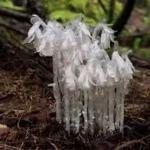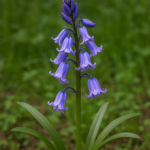
Sequoioideae, often known as redwoods, is a subfamily of coniferous trees in the Cupressaceae family, found in the northern hemisphere. These trees encompass the largest and tallest trees globally. They are widely recognized as some of the most remarkable and frequently used ornamental trees worldwide.
Hyperion holds the record as the tallest redwood tree ever documented, towering at an astounding height of 379.7 feet. This remarkable giant stands as a testament to the awe-inspiring height that redwoods can achieve, reaching for the skies in the lush forests of California. Its majestic presence serves as a beacon of resilience and longevity in the natural world, captivating all who gaze upon its towering stature.
Redwoods have the remarkable ability to live for over 2,000 years, solidifying their status as some of the oldest living organisms on our planet. These ancient giants have witnessed centuries of history unfold, standing as silent sentinels of time in the tranquil forests they call home. Their longevity serves as a reminder of the enduring power of nature and the importance of preserving these ancient treasures for future generations to appreciate.
Lost Monarch, with a diameter exceeding 26 feet, stands as a testament to the sheer size and grandeur of the largest redwood trees. Its colossal girth commands attention and respect, showcasing the impressive scale that these majestic trees can achieve in their quest for sunlight and sustenance. Lost Monarch’s massive trunk is a living testament to the resilience and strength of redwoods, enduring the passage of time with grace and dignity.
Redwoods exhibit a remarkable growth rate of 2-3 feet per year, showcasing their rapid development and impressive stature in a relatively short span of time. These towering giants reach for the sky with unwavering determination, their growth patterns reflecting the resilience and vitality of nature’s most magnificent creations. Each year of growth brings new heights and new horizons for these majestic trees, as they continue to thrive and flourish in their coastal habitats.
The bark of a redwood tree can reach a thickness of up to 12 inches, providing essential protection against fire and insects in their forest ecosystems. This robust bark serves as a shield, safeguarding the tree’s delicate inner layers from external threats and ensuring its continued health and vitality. The thick bark of redwoods is a testament to their adaptive qualities and their ability to withstand the challenges posed by their natural environment.
Redwoods can weigh over 500 tons, making them some of the heaviest trees in the world. This immense weight is a testament to the sheer size and scale of these majestic giants, whose massiveness commands respect and admiration from all who encounter them. The substantial weight of redwoods underscores their importance in their ecosystems, anchoring the forest floor and providing stability to the delicate balance of life within their verdant realms.
The wood of redwoods is renowned for its resistance to decay and insects, making it highly sought after for construction and furniture. This durable wood is prized for its longevity and beauty, with a rich color and straight grain that make it a favorite among craftsmen and artisans. The exceptional quality of redwood timber reflects the tree’s inherent strength and resilience, creating enduring works of art and structures that stand the test of time.
The leaves of redwoods contain tannins, natural compounds that help protect the tree from disease and pests. This built-in defense mechanism enhances the tree’s ability to ward off harmful pathogens and insects, ensuring its continued health and vitality in its forest habitat. The presence of tannins in redwood leaves highlights the tree’s adaptive qualities and its ability to thrive in challenging environmental conditions.
Redwoods possess the unique ability to regenerate from their root system, enabling them to survive wildfires and other natural disasters. This remarkable resilience allows redwoods to bounce back from adversity, sprouting new growth and continuing their legacy of endurance and strength. The tree’s capacity for regeneration underscores its remarkable adaptability and its vital role in maintaining the health and biodiversity of its forest ecosystem.
The roots of redwoods can extend up to 100 feet from the tree, intertwining with other redwoods to provide stability in windy conditions. This extensive root system forms a network of support and connection among redwoods, creating a web of strength that anchors the trees to the forest floor. The interwoven roots of redwoods exemplify the importance of community and cooperation in nature, as these majestic giants stand together against the forces of nature with unity and resilience.
Redwoods are native to the coastal regions of California and Oregon, thriving in the foggy, humid climate that characterizes these areas. Their natural habitat along the Pacific coast provides the ideal conditions for their growth, with the cool, moist air and mild temperatures supporting their towering stature and longevity in the lush forests they call home.
The cones of redwoods are small, measuring only about 1 inch in length, and contain tiny seeds that are dispersed by the wind. These compact cones play a crucial role in the tree’s reproductive cycle, releasing seeds that are carried by the breeze to new locations where they can germinate and grow into the next generation of towering redwood trees. The modest size of the cones belies their importance in the life cycle of these majestic giants, ensuring their continued presence in the coastal forests they inhabit.
Redwoods have a shallow root system that spreads out horizontally rather than deeply into the ground. This unique root structure allows redwoods to anchor themselves firmly to the forest floor, creating a stable foundation that supports their towering height and massive weight. The shallow roots of redwoods highlight their adaptability to their environment, as they find strength and stability in the interconnected network of roots that bind them to the earth.
The wood of redwoods is resistant to rot, making it a popular choice for outdoor furniture and decking. This natural durability stems from the tree’s inherent properties, which protect it from decay and deterioration even in harsh environmental conditions. The rot-resistant qualities of redwood timber make it a sustainable and long-lasting option for outdoor applications, providing beauty and functionality that endure for generations to come.
The wood of redwoods is prized for its straight grain and rich color, making it a favorite among woodworkers and artisans. This distinctive grain pattern and warm hue give redwood timber a unique aesthetic appeal, enhancing the beauty of any project or piece crafted from this exceptional wood. The rich color and fine grain of redwood make it a sought-after material for a wide range of woodworking applications, from furniture and cabinetry to decorative accents and architectural features.
Redwoods can absorb up to 500 gallons of water per day, playing a vital role in regulating the local water cycle. This impressive water-holding capacity helps to maintain moisture levels in the forest ecosystem, supporting plant and animal life and contributing to the overall health of the environment. The water-absorbing abilities of redwoods underscore their importance as keystone species in their habitats, influencing the balance of water resources and sustaining the delicate web of life in their verdant realms.
Redwoods provide important habitat for a variety of species, including birds, mammals, and insects. Their towering canopies and dense foliage create a diverse and thriving ecosystem that supports a wide range of wildlife, from nesting birds to foraging mammals and pollinating insects. The rich biodiversity found in redwood forests highlights the tree’s role as a cornerstone species, shaping the landscape and providing essential resources for countless organisms that call these majestic forests home.
Redwoods are often referred to as “living fossils” because they have remained relatively unchanged for millions of years. This ancient lineage dates back to prehistoric times, with redwoods retaining many of the same characteristics and adaptations that have allowed them to thrive for millennia. The designation of redwoods as living fossils speaks to their enduring presence on Earth and their status as living relics of a bygone era, offering a glimpse into the distant past through their towering forms and timeless beauty.
Redwoods are protected in national and state parks, where they are preserved for future generations to enjoy. These designated conservation areas serve as sanctuaries for redwoods and other native species, safeguarding their habitats from development and exploitation. The protection of redwoods in parks and reserves ensures that these majestic trees will continue to inspire awe and wonder in visitors for years to come, preserving their natural beauty and ecological significance for future generations to appreciate and cherish.
The wood of redwoods is lightweight compared to its strength, making it ideal for building materials that need to be both durable and easy to work with. This unique combination of strength and lightness makes redwood timber a versatile and practical choice for a wide range of construction projects, from structural supports to decorative finishes. The lightweight nature of redwood wood enhances its usability and appeal, providing a sustainable and eco-friendly option for builders and craftsmen seeking high-quality materials with minimal environmental impact.
Redwoods have a high resistance to fire, thanks to their thick bark and high water content. This natural fire resistance helps protect redwood trees from wildfires that are common in their forest habitats, allowing them to survive and thrive in the face of this natural threat. The fire-resistant qualities of redwoods highlight their adaptability to the challenging conditions of their environment, ensuring their continued presence in the fire-prone landscapes they call home.
Redwoods have been used by indigenous peoples for thousands of years for building materials, tools, and ceremonial purposes. The deep cultural significance of redwoods to indigenous communities reflects the tree’s importance as a valuable resource and symbol of strength and resilience. The enduring legacy of redwoods in indigenous traditions underscores their role as a cornerstone species in the cultural and ecological landscapes of the regions they inhabit, connecting past and present generations through their timeless presence and enduring beauty.
The age of a redwood tree can be determined by counting its growth rings, with each ring representing a year of growth. This method of age determination, known as dendrochronology, provides valuable insights into the life history of redwoods and helps researchers understand the growth patterns and environmental conditions that have shaped these ancient trees. The growth rings of redwoods serve as a natural record of their longevity and resilience, offering a window into the past that illuminates the rich history and heritage of these majestic giants.
Redwoods are a keystone species, playing a crucial role in maintaining the health and biodiversity of their ecosystems. Their towering canopies provide habitat and resources for a diverse array of plant and animal species, shaping the intricate web of life in their forest habitats. The presence of redwoods as keystone species underscores their importance in sustaining the delicate balance of nature, influencing the dynamics of their ecosystems and supporting the interconnected relationships that define the richness and diversity of life in their verdant realms.
Redwoods are a symbol of resilience and longevity, inspiring awe and admiration in all who encounter them. Their towering stature and enduring presence in the natural world evoke a sense of wonder and reverence for the power and beauty of nature. The symbolism of redwoods as icons of strength and perseverance resonates with people around the world, serving as a reminder of the enduring power of life and the importance of preserving these ancient treasures for future generations to appreciate and cherish.
Redwood FAQs: Unveiling the Secrets of these Forest Giants
Redwoods, with their towering heights and majestic presence, have captivated people for centuries. Here are some frequently asked questions to delve deeper into the world of these incredible trees:
1. What are redwoods and where do they grow?
There are actually two species of redwoods:
- Coast redwood (Sequoia sempervirens): These giants are the tallest trees on Earth and can be found along the foggy coast of California, from Mendocino County south to Big Sur.
- Giant sequoia (Sequoiadendron giganteum): These mammoths are the largest trees on Earth by volume and grow on the western slopes of the Sierra Nevada mountains in California.
2. How tall can redwoods grow?
Coast redwoods are the undisputed champions in height. Hyperion, a coast redwood in Redwood National Park, currently holds the record for the tallest tree at 379.7 feet (115.9 meters).
3. How old can redwoods get?
Redwoods are incredibly long-lived. Some coast redwoods are estimated to be over 2,000 years old, while giant sequoias can reach ages exceeding 3,000 years!
4. What makes redwoods grow so tall and live so long?
Several factors contribute to the redwoods’ impressive stature and longevity:
- Shallow root system: Unlike many deep-rooted trees, redwoods have a shallow, expansive root system that efficiently absorbs water and nutrients from the moist coastal fog and soil.
- Rot-resistant bark: Their bark is rich in tannins, which act as a natural defense against insects, rot, and even fire.
- Sprouting ability: Redwoods can sprout new shoots from their base and fallen branches, allowing them to regenerate after disturbances.
- Fog dependence: Coast redwoods rely on coastal fog for moisture, especially during dry periods.
5. Are redwoods in danger?
Unfortunately, yes. Historically, logging has significantly reduced redwood populations. While conservation efforts are underway, threats like climate change, fire, and habitat loss continue to pose challenges.
6. Can you drive through a redwood tree?
There are no naturally formed redwood tunnels large enough for vehicles to pass through. However, a few drive-thru trees exist in California, but these are modified trees on private property.
7. What are some good places to see redwoods?
California boasts numerous redwood National and State Parks, including Redwood National and State Parks, Muir Woods National Monument, and Sequoia and Kings Canyon National Parks. These parks offer stunning views of redwoods and opportunities for hiking, camping, and exploring the redwood ecosystem.
8. What is the ecological importance of redwoods?
Redwoods play a vital role in the environment:
- Habitat provision: They provide essential habitat for various animals, including birds, small mammals, and insects.
- Carbon sequestration: Redwoods store massive amounts of carbon dioxide, helping to mitigate climate change.
- Soil conservation: Their extensive root systems help prevent erosion and maintain healthy soil conditions.
9. Are redwoods related to sequoias?
Yes, redwoods and sequoias are closely related. They belong to the redwood family (Taxodiaceae) and share some characteristics, but they are distinct species with unique features.
10. What are some interesting facts about redwoods?
- Redwoods can grow new bark even over large wounds.
- They have special cone structures that release seeds only after fire.
- Some redwood forests have their own unique fog belt microclimate.
By learning more about redwoods, we can appreciate these magnificent trees and understand the importance of preserving these giants for future generations.









